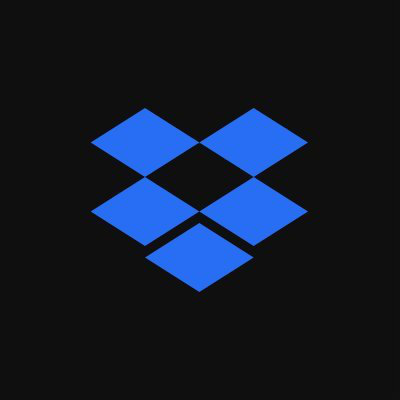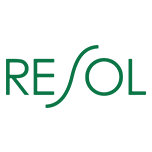
Dropbox Inc
NASDAQ:DBX


| US |

|
Johnson & Johnson
NYSE:JNJ
|
Pharmaceuticals
|
| US |

|
Berkshire Hathaway Inc
NYSE:BRK.A
|
Financial Services
|
| US |

|
Bank of America Corp
NYSE:BAC
|
Banking
|
| US |

|
Mastercard Inc
NYSE:MA
|
Technology
|
| US |

|
UnitedHealth Group Inc
NYSE:UNH
|
Health Care
|
| US |

|
Exxon Mobil Corp
NYSE:XOM
|
Energy
|
| US |

|
Pfizer Inc
NYSE:PFE
|
Pharmaceuticals
|
| US |

|
Palantir Technologies Inc
NYSE:PLTR
|
Technology
|
| US |

|
Nike Inc
NYSE:NKE
|
Textiles, Apparel & Luxury Goods
|
| US |

|
Visa Inc
NYSE:V
|
Technology
|
| CN |

|
Alibaba Group Holding Ltd
NYSE:BABA
|
Retail
|
| US |

|
JPMorgan Chase & Co
NYSE:JPM
|
Banking
|
| US |

|
Coca-Cola Co
NYSE:KO
|
Beverages
|
| US |

|
Walmart Inc
NYSE:WMT
|
Retail
|
| US |

|
Verizon Communications Inc
NYSE:VZ
|
Telecommunication
|
| US |

|
Chevron Corp
NYSE:CVX
|
Energy
|
Utilize notes to systematically review your investment decisions. By reflecting on past outcomes, you can discern effective strategies and identify those that underperformed. This continuous feedback loop enables you to adapt and refine your approach, optimizing for future success.
Each note serves as a learning point, offering insights into your decision-making processes. Over time, you'll accumulate a personalized database of knowledge, enhancing your ability to make informed decisions quickly and effectively.
With a comprehensive record of your investment history at your fingertips, you can compare current opportunities against past experiences. This not only bolsters your confidence but also ensures that each decision is grounded in a well-documented rationale.
Do you really want to delete this note?
This action cannot be undone.

| 52 Week Range |
24.55
33.27
|
| Price Target |
|
We'll email you a reminder when the closing price reaches USD.
Choose the stock you wish to monitor with a price alert.

|
Johnson & Johnson
NYSE:JNJ
|
US |

|
Berkshire Hathaway Inc
NYSE:BRK.A
|
US |

|
Bank of America Corp
NYSE:BAC
|
US |

|
Mastercard Inc
NYSE:MA
|
US |

|
UnitedHealth Group Inc
NYSE:UNH
|
US |

|
Exxon Mobil Corp
NYSE:XOM
|
US |

|
Pfizer Inc
NYSE:PFE
|
US |

|
Palantir Technologies Inc
NYSE:PLTR
|
US |

|
Nike Inc
NYSE:NKE
|
US |

|
Visa Inc
NYSE:V
|
US |

|
Alibaba Group Holding Ltd
NYSE:BABA
|
CN |

|
JPMorgan Chase & Co
NYSE:JPM
|
US |

|
Coca-Cola Co
NYSE:KO
|
US |

|
Walmart Inc
NYSE:WMT
|
US |

|
Verizon Communications Inc
NYSE:VZ
|
US |

|
Chevron Corp
NYSE:CVX
|
US |
This alert will be permanently deleted.
Dropbox Inc
In the bustling world of cloud storage and collaboration, Dropbox Inc. has carved a niche for itself by transforming how individuals and businesses store, share, and manage their digital information. Founded in 2007 by Drew Houston and Arash Ferdowsi, the company's inception came from a simple yet profound idea: a seamless tool to access files from anywhere. What started as a personal frustration of forgetting a USB flash drive became the cornerstone of a revolutionary service leveraging cloud technology. Dropbox’s user-friendly interface and robust syncing capabilities quickly attracted millions of users, changing the perception of file management from a cumbersome task into an effortless experience.
As Dropbox grew, it expanded beyond mere file storage to become an integral part of business operations worldwide. The company generates revenue primarily through a subscription model, offering basic services for free while enticing users with advanced features and increased storage through paid tiers. This freemium approach not only encourages wide adoption but also allows Dropbox to engage users at various levels, from individual consumers to large enterprises. Over the years, Dropbox has diversified its offerings by integrating productivity tools and collaboration features, such as Paper and HelloSign, aiming to create a comprehensive ecosystem that supports remote work and team collaboration. This strategic expansion not only aids Dropbox’s growth but also reinforces its position as a critical infrastructure provider in the digital age, tapping into the growing demand for efficient and reliable cloud-based solutions.

In the bustling world of cloud storage and collaboration, Dropbox Inc. has carved a niche for itself by transforming how individuals and businesses store, share, and manage their digital information. Founded in 2007 by Drew Houston and Arash Ferdowsi, the company's inception came from a simple yet profound idea: a seamless tool to access files from anywhere. What started as a personal frustration of forgetting a USB flash drive became the cornerstone of a revolutionary service leveraging cloud technology. Dropbox’s user-friendly interface and robust syncing capabilities quickly attracted millions of users, changing the perception of file management from a cumbersome task into an effortless experience.
As Dropbox grew, it expanded beyond mere file storage to become an integral part of business operations worldwide. The company generates revenue primarily through a subscription model, offering basic services for free while enticing users with advanced features and increased storage through paid tiers. This freemium approach not only encourages wide adoption but also allows Dropbox to engage users at various levels, from individual consumers to large enterprises. Over the years, Dropbox has diversified its offerings by integrating productivity tools and collaboration features, such as Paper and HelloSign, aiming to create a comprehensive ecosystem that supports remote work and team collaboration. This strategic expansion not only aids Dropbox’s growth but also reinforces its position as a critical infrastructure provider in the digital age, tapping into the growing demand for efficient and reliable cloud-based solutions.
Revenue: Q3 revenue was $634 million, down 0.7% year-over-year but ahead of guidance, with constant currency revenue at $631 million.
Guidance Raised: Full-year 2025 revenue guidance was raised by $18 million to $2.511–$2.514 billion, driven by stronger retention and individual SKU performance.
Margins: Q3 operating margin reached 41.1%, up nearly 5 percentage points year-over-year and above guidance, with gross margin at 81.4%.
Cash Flow: Unlevered free cash flow was $314 million for Q3, up 39% year-over-year, and full-year guidance was raised to at or above $1 billion.
Paying Users: Paying users declined by 64,000 in Q3 to 18.07 million; full-year decline expected to improve to 250,000, better than previous expectations.
Dash Launch: Dropbox launched Dash self-serve in the US at $19 per user per month, with strong early engagement and ongoing integration into core Dropbox.
Share Repurchase: Company repurchased 14 million shares in Q3 ($390 million); $1.58 billion remains authorized for buybacks.
2026 Outlook: Dropbox aims to scale Dash and return to revenue growth but does not expect margin expansion next year due to increased investment.




































